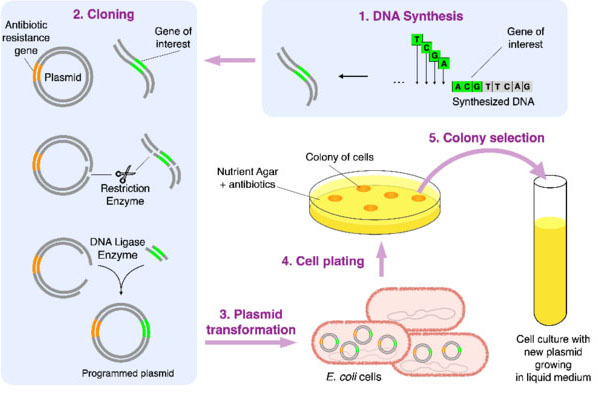Genetic Engineering: Reshaping Life at the Molecular Level
What is Genetic Engineering?
Genetic engineering, also known as genetic modification, is a set of technologies used to change the genetic makeup of cells, including the transfer of genes within and across species boundaries to produce improved or novel organisms. The techniques involve the manipulation, modification, and recombination of DNA or other nucleic acid molecules to modify an organism's genetic makeup.

Key Techniques in Genetic Engineering
Genetic engineering involves several key techniques:
Recombinant DNA Technology
Recombinant DNA technology involves the insertion of one piece of DNA into another. This process allows for the introduction of new genes into an organism's genome, enabling the expression of novel traits. The DNA of interest is first isolated, then combined with a carrier DNA molecule called a vector, which is then introduced into the host organism.
Gene Editing
Gene editing techniques, such as CRISPR-Cas9, allow for precise modifications to be made to an organism's DNA. These techniques use specialized enzymes to cut DNA at specific locations and then insert, delete, or replace DNA sequences. Gene editing enables researchers to make targeted changes to an organism's genetic makeup with unprecedented precision and efficiency.
Gene Cloning
Gene cloning involves the creation of multiple identical copies of a gene or DNA sequence. This is typically accomplished by inserting the desired gene into a vector, which is then introduced into a host cell. As the host cell divides, it replicates the vector along with the inserted gene, producing many copies of the gene of interest.
Applications of Genetic Engineering
Genetic engineering has a wide range of applications across various fields:
Agriculture
Genetic engineering has been used to develop crops with enhanced traits, such as increased yield, improved nutritional value, and resistance to pests, diseases, and environmental stresses. Genetically modified crops, such as Bt cotton and herbicide-resistant soybeans, have been widely adopted in many parts of the world.
Medicine
Genetic engineering has revolutionized the field of medicine by enabling the production of recombinant proteins, such as insulin and human growth hormone, in bacteria or other host organisms. Gene therapy, which involves the introduction of functional genes into cells to replace defective ones, holds promise for the treatment of genetic disorders.
Industrial Biotechnology
Genetically engineered microorganisms are used in the production of various chemicals, enzymes, and biofuels. By introducing genes that encode for desired traits, researchers can create microorganisms that efficiently produce valuable compounds, such as bioplastics, biofuels, and pharmaceuticals.
Ethical and Societal Considerations
While genetic engineering offers tremendous potential benefits, it also raises ethical and societal concerns. Some of the key issues include:
- Potential unintended consequences of releasing genetically modified organisms into the environment
- Ethical concerns surrounding the modification of human embryos and the potential for creating "designer babies"
- Ownership and control of genetically modified organisms and the associated intellectual property rights
- Public perception and acceptance of genetically engineered products
Addressing these concerns requires ongoing public dialogue, regulatory oversight, and responsible development and application of genetic engineering technologies.
Future Prospects
Genetic engineering continues to advance rapidly, with new technologies and applications emerging at an unprecedented pace. Some of the future prospects include:
- Development of more precise and efficient gene editing tools
- Expansion of gene therapy approaches for a wider range of genetic disorders
- Creation of novel organisms with enhanced capabilities for bioremediation, carbon sequestration, and other environmental applications
- Integration of genetic engineering with other emerging fields, such as synthetic biology and nanotechnology
As our understanding of genetics and the tools for manipulating DNA continue to improve, the potential applications of genetic engineering are vast and exciting. However, realizing this potential will require responsible development, rigorous safety assessments, and ongoing public engagement to ensure that the benefits are maximized while the risks are minimized.
Further Reading
Journal of Genetic Engineering and Biotechnology, The genome editing revolution: review
Sustainable Energy Technologies and Assessments, Genetic engineering strategies for performance enhancement of bioelectrochemical systems: A review
